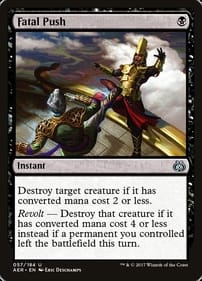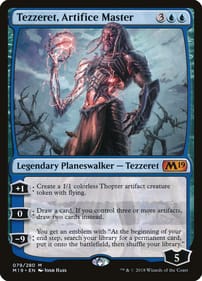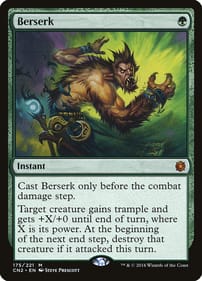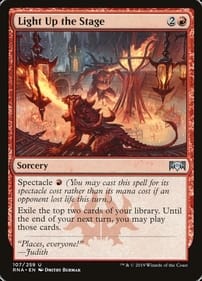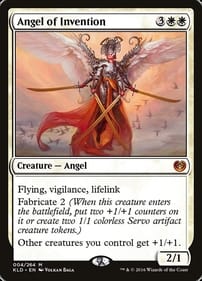Full-length Murgatroyd & Nepenthe Graphic Novel is Perfect Summer Reading
By Dan BrownSummer is here and so is D.S. Barrick’s full-length Murgatroyd & Nepenthe graphic novel.Now is the perfect time to savour this dreamlike tale of two outsiders travelling through a series of psychedelic landscapes, musing about the nature of life as they go. As I’ve said elsewhere, this book is utterly original – I’ve never read anything else like it, which is a good thing.It’s hard for me to describe the pair’s first book-length adventure. It is poetic, wistful, fun, and challenging in all the right ways. If you don’t know the name D.S. Barrick, odds are you’ve already seen his work. He is the Forest City cartoonist who created the lively mural on the exterior of L.A. Mood’s new location at 100 Kellogg Lane. His characters likewise grace the store’s bags and T-shirts.He is also the illustrator writer behind the venerated local character Skulsi Thatcher and has collaborated with writer Scott MacDougall on the Lucky Unlucky series. Barrick is on record as saying what he wanted to do with Murgatroyd & Nepenthe, first published as four separate comics, was to create a story that has no beginning or end – he wanted it to be “all middle.” What this means in practical terms is the focus rests on the two central characters and how they interact. It also makes it impossible for me to “spoil” the story.At the same time, you’ll have a hard time ignoring the different locales the oddball pair move through.There are pyramids, ships that travel on air as easily as water, Christmas trees, rugged cavescapes, and sparkling vistas of stars with flying saucers that put me in the mind of how Jack Kirby pushed the comic form in new directions back in the day.Another way of saying it: This is the most colourful black-and-white book I’ve come across.There are also girl vampires, street urchins and robots (a D.S. Barrick specialty). As part of the bonus materials, the London artist has even included renderings of his characters done by his young daughter in the back of the new volume.The reason I think this is the best time to read Murgatoryd & Nepenthe is because in the lazy summer, the overtaxed brain needs a break from the usual routine.So if you want a thought-provoking and moving diversion from the stuff being done by the big publishers, check out D.S. Barrick’s latest. It will blow your mind, but in a good way.How Barrick will top himself, I don’t know, but I hear through the grapevine the next projected book in the series has an intriguing premise: Murgatroyd & Nepenthe in space!Dan Brown has covered pop culture for 30 years as a journalist and also moderates L.A. Mood’s monthly graphic-novel group.
Upcoming Omnibus Volumes Feature Comics from Marvel’s Michael Golden Age
By Dan Brown There’s a whole lotta classic Michael Golden art coming down the pipeline. I invite young comic fans who missed out on Golden’s most-celebrated work in the 1980s to check out two omnibus editions set to debut early next year. They feature reprinted issues from two series that kicked off in 1979 – ROM: Spaceknight and The Micronauts – then ran into the mid-1980s. If you want to understand why fiftysomething dudes like me always seem to be bellyaching about how comics reached perfection when we were kids, these books are Exhibit A. In my memory, Golden’s pencils leapt off the page with undeniable power and expressiveness. He could take obscure Marvel comic characters and make them memorable. He could make alien landscapes seem truly otherworldly, as few pencillers – think George Perez and Jack Kirby – did. Golden was never the interior artist on ROM, but he did contribute a series of amazing front covers in the title’s early going. A toy tie-in with Hasbro, ROM followed the exploits of a galactic do-gooder who comes to Earth to dispatch the evil Dire Wraiths. Having those shape-shifters as foes imbued the series with a vibe straight out of Invasion of the Body Snatchers. Of course, the ironic part is how another race of Marvel shape-shifters, the Skrulls, had already been trying to take over the planet, so the Wraiths were kind of redundant. I especially love the cover of issue 11, which shows the silver spaceknight ripping the wing from an F-16 in mid-air as a squad of the planes swarms him. Golden’s art had started to make an impression on me earlier in 1979 with the Micronauts. I was 11 years old. He illustrated the first 12 issues of that title, also designed to push the toy line of the same name, and I now view his pencils on the book as one of the great runs in comic history, in the same category as Perez’s time on New Teen Titans and John Byrne’s pencils for the Uncanny X-Men. The cover of each issue blared “They came from inner space” and the action took place on a sub-microscopic scale; what in our world are tiny molecules, were planet-sized in the Microverse. It’s true the premise wasn’t bursting with originality: A band of plucky rebels, including two robots, fights to free a galaxy in the iron grip of a villain clad in black armour. But Golden’s art elevated the material. Especially moving was issue 10, in which the warrior Acroyear race – as well as the conscious homeworld they inhabit, Spartak – repulses an army of Baron Karza’s dog soldiers. If the Microverse sounds familiar, it’s because it plays a huge role in the Marvel Cinematic Universe, where it’s known as the Quantum Realm. The biggest mystery to me was why, with the rare exception of standalones like Avengers Annual No. 10 in 1981, Golden wasn’t allowed by Marvel to play with the company’s marquee characters. I guess not every comic creator is destined to go down in history as being as prolific as Kirby. ROM: The Original Marvel Years Omnibus Volume 1 includes the first 29 issues of ROM: Spaceknight, as well as Power Man and Iron Fist No. 73, in which he guest-starred. Micronauts: The Original Marvel Years Omnibus Volume 1 collects the first 29 issues of the series, plus the first two annuals. Both go on sale in January. Dan Brown has covered pop culture for 30 years as a journalist and also moderates L.A. Mood’s monthly graphic-novel group.
Watcher not satisfied with just watching: Omniscient alien serves as role model to journalist-in-the-making
By Dan Brown There is a Marvel character who inspired me to become a journalist – and it’s not Peter Parker. Nor is it Robbie Robertson or Ben Urich or anyone else who worked at the Daily Bugle, not even J. Jonah Jameson. It’s the Watcher. Where else would a boy growing up in small-town Ontario in the 1970s get the idea that being a professional observer could be a noble pursuit, except from a reticent, toweringly tall, omnipresent, bald alien? I certainly didn’t get it from my parents, neither of whom were journalists. I delivered the London Free Press to doorsteps and mailboxes in Poplar Hill every morning, so being familiar with the newspaper business from an early age likely played a part. But looking back, it’s apparent to me the Watcher was my journalistic role model long before I was even thinking of choosing a career path. I forget where I first encountered Uatu, as he is known among his people. It may have been in the pages of The Fantastic Four. I do recall how he caught my attention for real when Marvel’s What If? title debuted in 1977. The Watcher’s mission is to observe events and be present to witness crucial moments as the universe unfolds. He materializes on Earth when things of historic import are in the offing. It was Reed Richards, the leader of the Fantastic Four, who figured out if the Watcher had made himself known to mere humans, something heavy was about to go down. There is something pure to the Watcher’s stated purpose. “My sworn task is to observe and chronicle great events within this sector of the universe. My curse is to always witness and never participate,” he explained in one comic. “Is it not my sworn duty to stand passively by, observing the births and lives and deaths of men – and universes? Am I not fated forever to know the future in its infinite variations – yet bound by a sacred oath never to interfere?” the omniscient one asked in another. I can see how those kinds of idealistic sentiments would have made a big impression on my younger self. Decades later I ended up being a reporter, and that’s what a reporter is supposed to do: Bear witness. Oh, and about that oath never to meddle in the affairs of Earthlings . . . yeah, he didn’t keep his promise. The Watcher was constantly swearing not to interfere, and then, like clockwork, breaking his vow. Kind of like how the crew of the Enterprise was always violating the Prime Directive. Stationed on Earth’s moon, over the eons of rubbernecking the Watcher became enamoured of humankind. His tragedy is that he developed a soft spot for those whose history he was supposed to monitor without altering, which he could easily do, since he is pretty much omnipotent. I notice on some fan sites there are estimates of how many times the Watcher changed the course of events in the Marvel Universe that run into the hundreds. So can a journalist in our world succeed where the Watcher failed? No. For starters, there’s the scientific dictum that states even the act of observing something necessarily changes it. And if objectivity was possible, then we could simply program robots to do the job of journalism for us. But experience has taught me how human reporters can be, if not objective, then fair, which is what I strive to achieve in my own work as a watcher. Dan Brown has covered pop culture for 30 years as a journalist and also moderates L.A. Mood’s monthly graphic-novel group.
Laufman makes jump to grownup themes in Crimson Fall: Lambs of God
By Dan BrownWith Crimson Fall, London graphic novelist Derek Laufman has effortlessly made the shift from all-ages comics to more mature sequential art. That said, I’ve read the books Laufman has written/drawn for younger readers, and I never felt like I was being talked down to. And I’m old.Longtime Laufman fans need not fret about Crimson Fall. It has all the fun and adventure of Bot 9, RuinWorld and Witch of Wickerson; in the Forest City creator’s words, Crimson Fall is “Hellboy meets the Witcher with a splash of Game of Thrones in there.” In other words, the 24-page offering is a dungeon adventure with swear words and one very meaty adult theme that could be lost on younger readers: the complexity of faith.Byron’s Laufman debuted the black-and-white book in April at the Toronto Comics Art Festival, a gathering of creators whose specialty is producing indie comics, which is exactly Laufman’s jam, even though he has done work for DC and Marvel – the Coke and Pepsi of the comics industry – drawing characters like Batman, Spider-Man and Luke Skywalker.Subtitled Lambs of God, it’s part of a projected series set in the same milieu, and takes readers into a shadow-filled monastery that has been pillaged by forces unknown. Father McKellen is seeking answers about how his fellow holy men died, retaining the broadsword-wielding knight Sir Duncross to handle any, er, supernatural entanglements.You can enjoy the story as a straightforward, kickass adventure tale about a pair of demon slayers doing what they do best. But if you go beneath that surface battle, paying attention to the interplay between the two men, you’ll notice a difference in their beliefs.It is Father McKellen, the man of the cloth, who – when confronted with irrefutable evidence that creatures from hell exist – asks a rational question: “How is it possible that demons walk in our world?”Sir Duncross, in between hacks of his wide blade that echo with sound effects like “Slash,” “Slice” and “Stab,” outlines his belief in an older order: He puts his faith in gods, not God. He is not impressed with monotheism. “Does your church not still seek the truth?” the fighter quizzes the cleric, revealing the disgust he feels for religious leaders who won’t be straight with their followers about the nature of evil.The foray into the monastery comes to a fiery conclusion, and in the end, each of the men makes a small symbolic move in the direction of the other.As I have with Laufman’s previous creations, I give Crimson Fall: Lambs of God an enthusiastic thumbs up. This is a fun adventure, stylishly rendered, that left me with much food for thought.Dan Brown has covered pop culture for 30 years as a journalist and also moderates L.A. Mood’s monthly graphic-novel group.
Call me impressed by Call Me Bill
By Dan BrownCall Me Bill is an intriguing graphic novel that provides one possible answer to a question posed long ago: Why would a young woman who drowned in a maritime disaster off Canada’s East Coast in 1873 be dressed up as a male sailor when her remains were recovered?It’s former Londoner and current Nova Scotia resident Lynette Richards who supplies that answer, sketching a history – bolstered by newspaper accounts from back in the day – of the S.S. Atlantic crew member who went by the name of Bill.This book transported me back to the 1870s, with its sparse lines, washed-out grey tones and accurate, period-specific dialogue.“I didn’t know Bill was a woman,” a fellow sailor tells newspaper reporters after the ship hits rocks and sinks close to shore. “He used to take his grog like all the rest and was always begging and stealing licorice. He was a good fellow and I’m shocked that he was a woman.”As a starting point, Richards – whose usual medium is stained glass – imagines a New Jersey farm girl named Maggie Armstrong whose time “playing the tomboy” is put to an end by a stern stepmother who demands she must finally “dress and behave like a lady.”Having left home, and after a series of high-seas adventures, Bill has the bad fortune to be on the deck of the Atlantic the night it sinks. The sinking was huge news at the time, but got overshadowed in the history books by the Titanic, which went down a few decades later. (Oh, and for the record, Call Me Bill would make an AMAZING movie.)How evocative is Call Me Bill? In one panel, which sets forth part of a trip Bill took to England prior to joining the crew of the Atlantic, two starving rats have the most pained looks on their faces, as vivid a portrayal of animal suffering as I’ve ever come across. Richards has an impressive ability to evoke sympathy for her characters.That kind of symbolism runs through the whole book, as when another sailor explains to Bill how seals called selkies are believed by mariners to be able to come ashore, assuming the form of humans females on dry land. “The seals gaze at me as if they know my deepest secrets,” Bill thinks, seeing their sad eyes.And early in the story, there is a moment of reflection on a trestle bridge after Bill runs away from home: “Behind me was my past, ahead my future. The river babbled like many voices.” Bill plunges ahead into an uncertain future, not knowing that doom awaits on the other side.Although it is published by Emanata, the young-adult imprint of East Coast publisher Conundrum Press, Richards never talks down to her readers in Call Me Bill.And as a stirring chapter in our country’s history of maritime disasters, I put Call Me Bill right up there with the Gordon Lightfoot song Wreck of the Edmund Fitzgerald. It moved me that much.Dan Brown has covered pop culture for 30 years as a journalist and also moderates L.A. Mood’s monthly graphic-novel group.
Veteran Reviewer and Unabashed Comics Lover Comes to L.A. Mood Comics & Games Website
By Dan Brown. You can call them cartoons or sequential art or graphic novels or comic books. Whatever term you prefer, I love ’em all. And I’ll be sharing my enthusiasm for this special art form on the website of L.A. Mood Comics & Games, the venerable London store that serves as the unofficial headquarters for London comic fans, every week via this column. I invite you to consider it your once-a-week chance to geek out with me. How did I get this assignment? As the tagline at the bottom of this column indicates, I’ve been covering pop culture as a journalist for the last 30 years. I’ve had staff positions at such news outlets as the National Post, CBC.ca, and the New Brunswick Telegraph-Journal. My freelance work has appeared in places like the Globe and Mail and on MSNBC.com. From 2012 to 2022 I wrote a graphic-novel column every Saturday as part of my work at the London Free Press, where I had also been a blogger, among many other duties. I have also, since 2009, been the moderator for L.A. Mood’s monthly graphic-novel club. (Shameless plug: You should check it out.) But, most important of all, I’m a card-carrying comic lover. My starting point is the Marvel Comics of the 1970s and as far as superheroes go, my fave is likely the Thing, the self-loathing, orange-coloured pile of rocks who served as the ace pilot for the Fantastic Four. I would say I have a major in Marvel and a minor in DC. Even now, DC’s heroes still strike me as emotionally constipated; I was a sucker for the overemotional heroes Jack Kirby dreamed up in collaboration with Stan Lee. By the time I was a university student in the mid 1980s, the comics world had exploded. In fact, I’m so old, I remember when the idea of comics being used to tell stories with characters other than superheroes was a revolutionary one. I would love to go back in time to when I was nine years old and tell my younger self: One day, all those comics you love will be source material for movies and TV shows. There will be so many of them, you won’t have time to watch them all. So what excites me now? The work of Southwestern Ontario’s own Jeff Lemire. The parody stylings of Bob Burden, the mad genius behind Flaming Carrot. Mimi Pond. Lynda Barry. Jillian and Mariko Tamaki. And on and on . . . This column will aspire to cover local comics first, meaning those with a connection to Southwestern Ontario and London. Then the rest of Canada. Then the world beyond. Some future columns will be straightforward reviews, others will touch on issues raised by comics. And I am guessing superhero film/TV adaptations will be an unavoidable topic. I would also love to hear from you and get a dialogue going about the comics scene here in the Forest City. One promising sign we have put the pandemic behind us was the reappearance in April of Tingfest, the downtown graphic-art festival that celebrates local creators, so I am hoping the geek calendar of events can finally resume in earnest. (Shameless plug: Have you got your tickets for Forest City Comicon on June 24?) I also want to know what comics and characters are rocking your world. You can send me an email in care of info@lamoodcomics.ca. Let’s get this party started! Dan Brown has covered pop culture for 30 years as a journalist and also moderates L.A. Mood’s monthly graphic-novel group.








